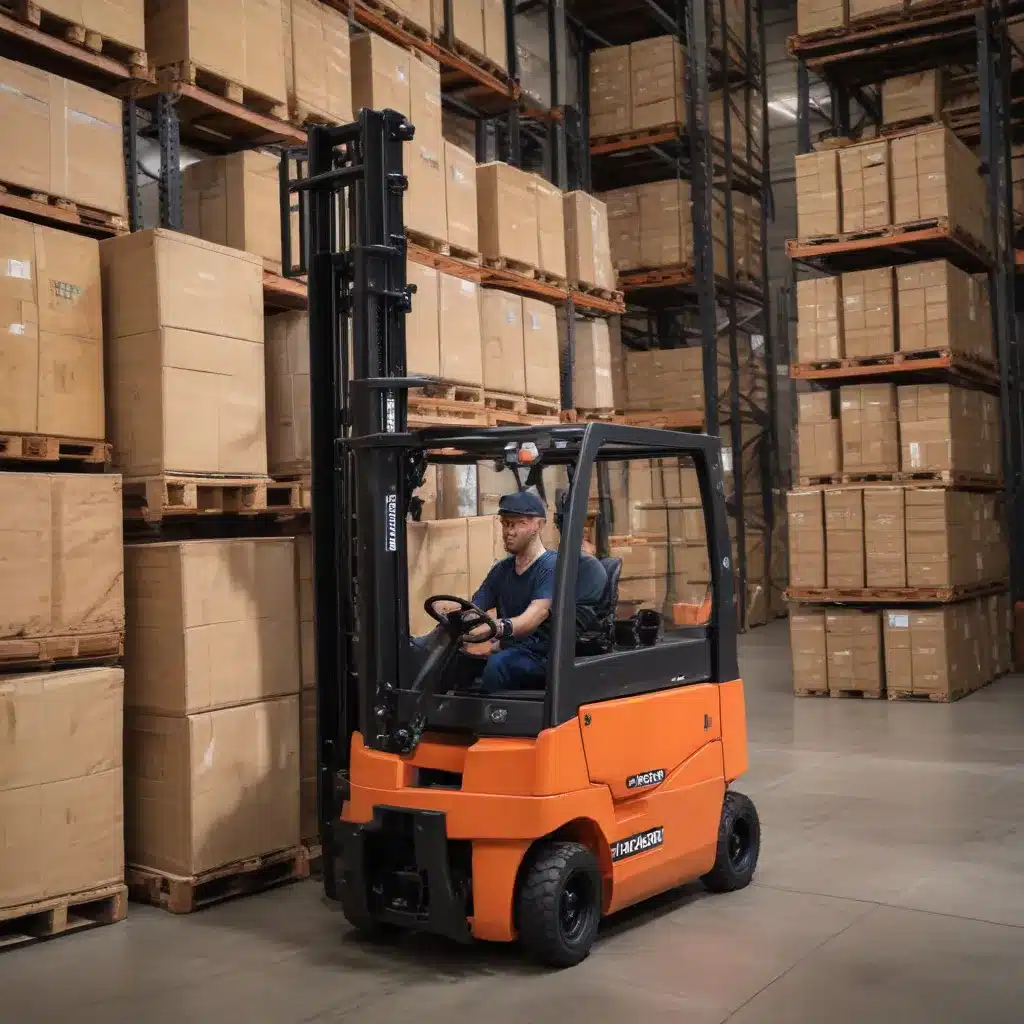
Prioritizing Operator Comfort and Efficiency
As a seasoned industry expert in forklifts, warehousing, and logistics, I understand the crucial role that operator comfort and efficiency play in maximizing productivity and job satisfaction. Forklift operators are the backbone of any successful warehouse or logistics operation, and their well-being directly impacts the overall performance of the organization.
One company that has made significant strides in operator-centric design is Konecranes, a leading provider of outdoor industrial and port equipment. Konecranes prioritizes ergonomic design principles in their lift trucks and reach stackers, ensuring that operators can work in a natural and comfortable position, minimizing fatigue and improving efficiency.
The operator cabins in Konecranes’ equipment are designed with the operator’s well-being in mind. Features such as adjustable seats, intuitive joystick controls, and ergonomic control panels allow operators to maintain proper posture and reduce physical strain. Additionally, the cabins are equipped with air conditioning, heating, excellent visibility, and low noise levels, creating a pleasant and productive working environment.
Konecranes has also integrated advanced suspension systems into their equipment to minimize vibration and provide a smoother ride. By reducing operator fatigue and discomfort caused by uneven terrain, these systems enhance productivity and enable operators to navigate rough surfaces with ease.
Moreover, Konecranes’ lift trucks and reach stackers feature advanced operator assistance systems that boost productivity and safety. Automatic load-sway control, for example, minimizes load swinging during lifting and positioning, enabling operators to handle loads more efficiently. These safety measures not only protect operators but also prevent costly equipment damage, ensuring uninterrupted operations.
Leveraging Technology to Enhance Operator Experience
Technology plays a crucial role in enhancing operator comfort and efficiency. Konecranes has integrated features such as telematics and remote monitoring, providing operators and fleet managers with real-time data on equipment performance and maintenance needs. This proactive approach reduces downtime, optimizes operations, and boosts job satisfaction by providing operators with the necessary tools and information.
Konecranes also values operator feedback and involvement in the development process. By actively considering the needs and preferences of operators, Konecranes continuously improves equipment design and functionality. This inclusive approach fosters a sense of ownership among operators, demonstrating that their opinions matter and leading to increased job satisfaction and pride in operating Konecranes’ cutting-edge equipment.
Embracing Ergonomics and Operator-Centric Design
The impact of ergonomics on material handling equipment design cannot be overstated. Ergonomics is the science of designing equipment and systems to fit the human body and facilitate optimal performance. By incorporating ergonomic principles into the design of forklift trucks and other material handling equipment, manufacturers can significantly reduce the risk of workplace injuries, increase productivity, and enhance employee comfort and satisfaction.
Ergonomically designed equipment takes into consideration the natural movements and postures of the workers, minimizing the strain on their bodies during operations. Features such as adjustable controls, padded grips and handles, cushioned seating, and easy-to-read displays can make a significant difference in operator comfort and safety.
The benefits of ergonomic design extend beyond just physical well-being. When operators are provided with equipment that is comfortable, easy to use, and reduces physical strain, it improves their overall job satisfaction. Employees are more likely to feel valued and supported by their employer, leading to higher morale and increased motivation.
Fostering a Culture of Safety and Engagement
Safety is another crucial factor in reducing warehouse turnover and enhancing operator engagement. A safe working environment not only protects employees from potential injuries and accidents but also creates a culture of trust and well-being. When workers feel safe, they are more likely to be engaged, motivated, and committed to their job.
Implementing comprehensive safety measures and protocols, such as regular equipment maintenance, proper training for employees, clear safety protocols and procedures, and the use of safety equipment, can significantly contribute to reducing turnover. By prioritizing safety, businesses can create a work environment that attracts and retains top talent, while also ensuring compliance with local regulations and industry standards.
Leveraging Data and Training for Continuous Improvement
Forklift fleet management systems equipped with wireless technology can provide valuable data on operator performance. By gathering and analyzing this data, organizations can reward high performers, address issues with poor performers, and foster a culture of continuous improvement.
Sharing performance data with operators, especially positive trends, helps reinforce good behavior and enhances operator performance. It can also bring an element of gamification to the warehouse, encouraging a friendly competition that can help reinforce positive trends. Additionally, providing individualized training and development opportunities can help prepare operators for evaluation and feedback, creating a cycle of continuous learning and improvement.
Conclusion
In the fast-paced and demanding world of warehousing and logistics, forklift operators are the unsung heroes who drive productivity and efficiency. By prioritizing operator comfort, safety, and engagement, businesses can create a work environment that not only enhances productivity but also fosters a sense of pride and loyalty among their workforce.
Through the implementation of ergonomic design principles, the integration of innovative technologies, and the cultivation of a strong safety culture, organizations can unlock the full potential of their forklift fleet operators, leading to increased job satisfaction, reduced turnover, and ultimately, improved bottom-line results.
As an industry expert, I encourage you to explore the solutions and insights offered by companies like Konecranes, and to partner with consultative firms such as Forklift Reviews to optimize your forklift fleet operations and create a more engaged and productive workforce.

